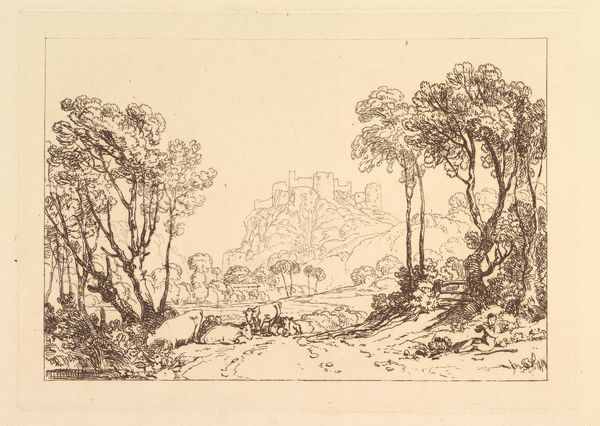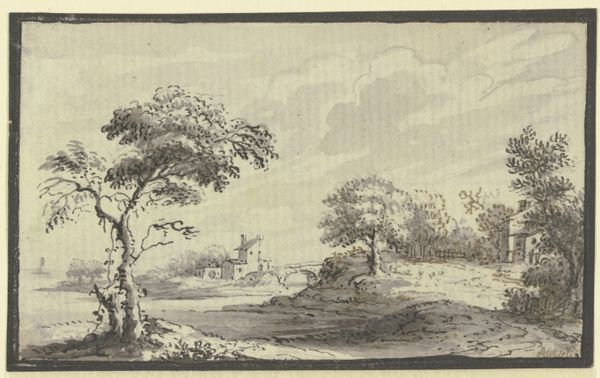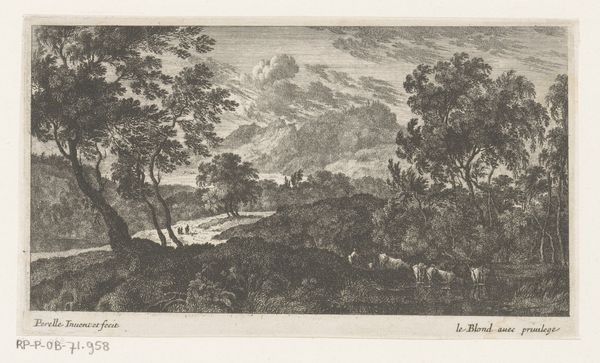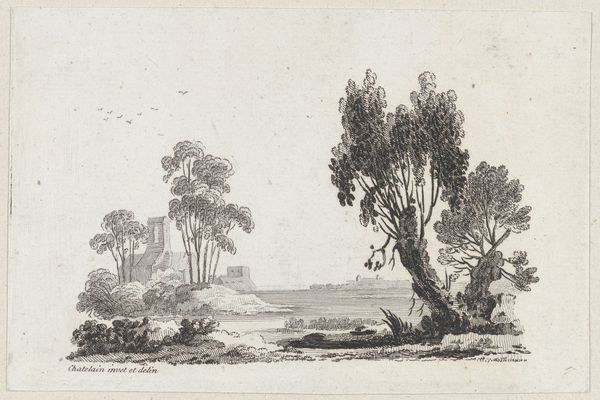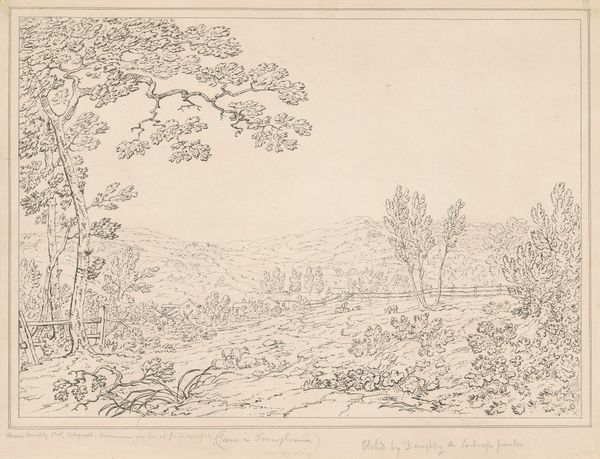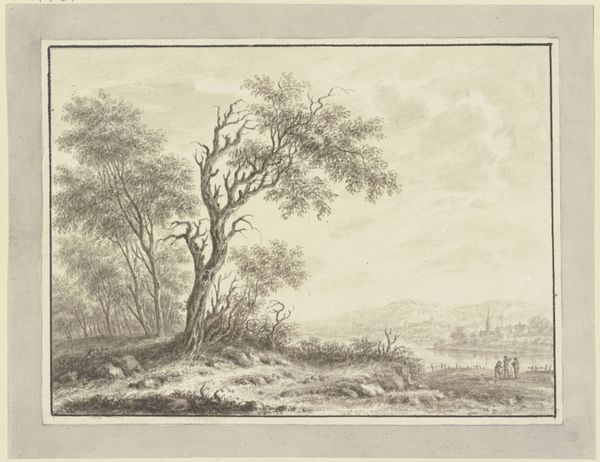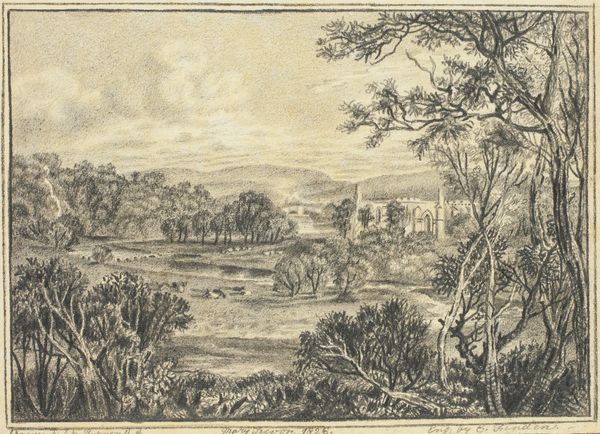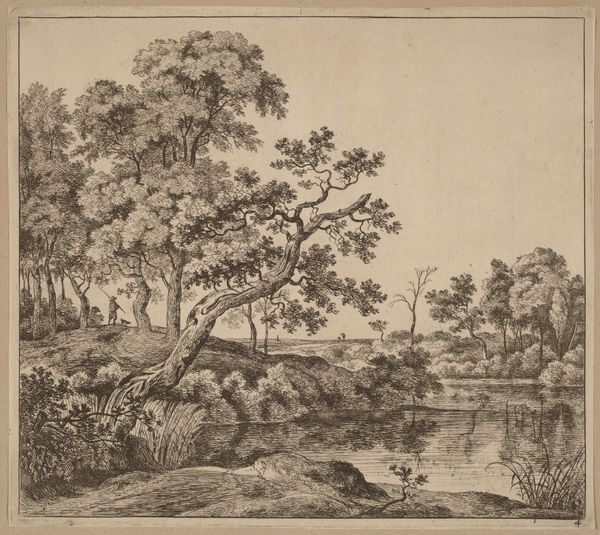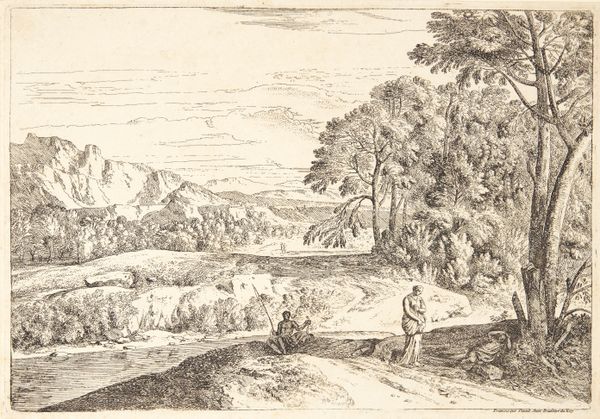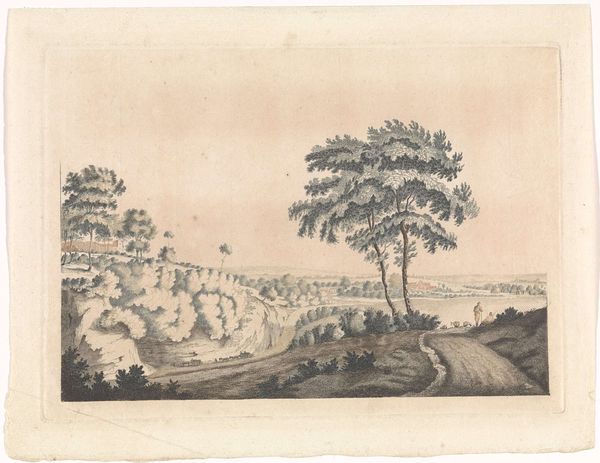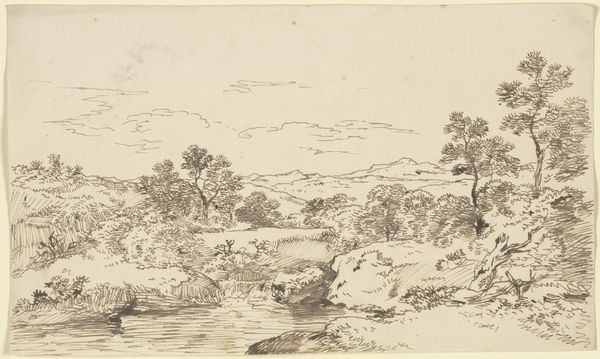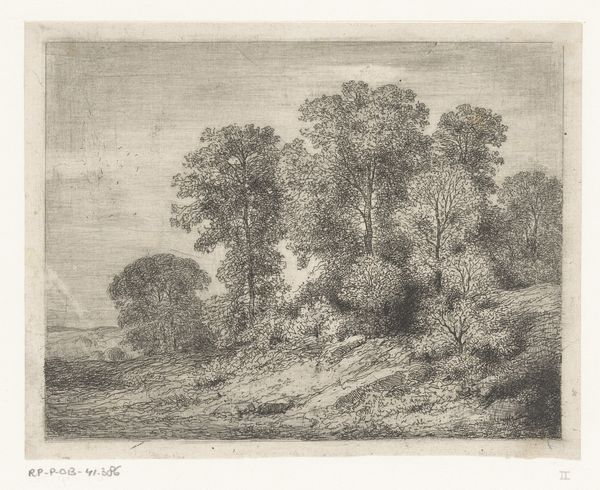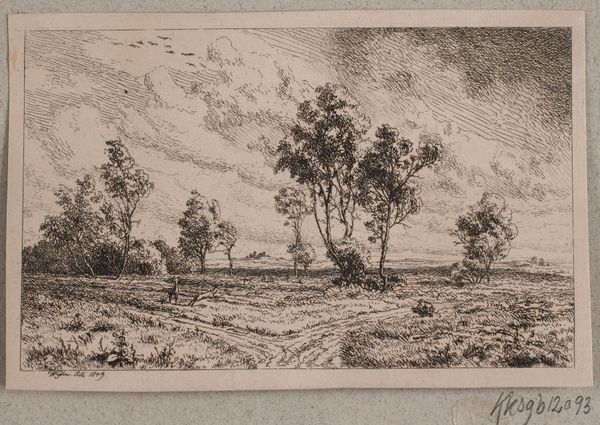
print, engraving
# print
#
landscape
#
etching
#
line
#
engraving
Dimensions: 70 mm (height) x 136 mm (width) (bladmaal)
This is Frederik Ludvig Bradt’s ‘Landskab med Hjorte’, a small etching rendered in ink on paper. Etching, as a printmaking technique, has a long and fascinating history. It involves applying a protective wax resist to a metal plate, then drawing through it with a sharp needle to expose the metal. The plate is then submerged in acid, which bites into the exposed lines, creating grooves. Ink is applied to the plate, filling these lines, and then the surface is wiped clean. Finally, the plate is pressed onto paper, transferring the ink and creating the print. The controlled corrosion of etching allows for fine detail and subtle tonal variations. The quality of line in this print, from the dense foliage to the delicate rendering of the deer, speaks to Bradt’s technical skill. In the 18th century, printmaking was not only an artistic medium but also a means of mass production. Etchings could be reproduced and distributed widely, making art accessible to a broader audience, reflecting the rise of a new kind of visual culture.
Comments
No comments
Be the first to comment and join the conversation on the ultimate creative platform.
